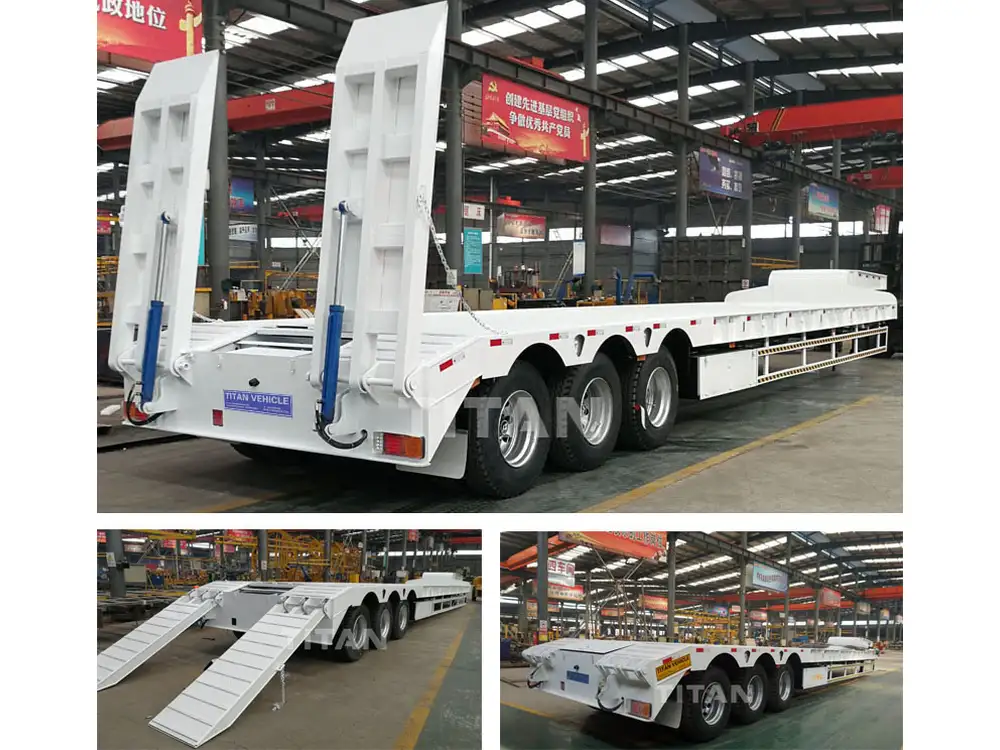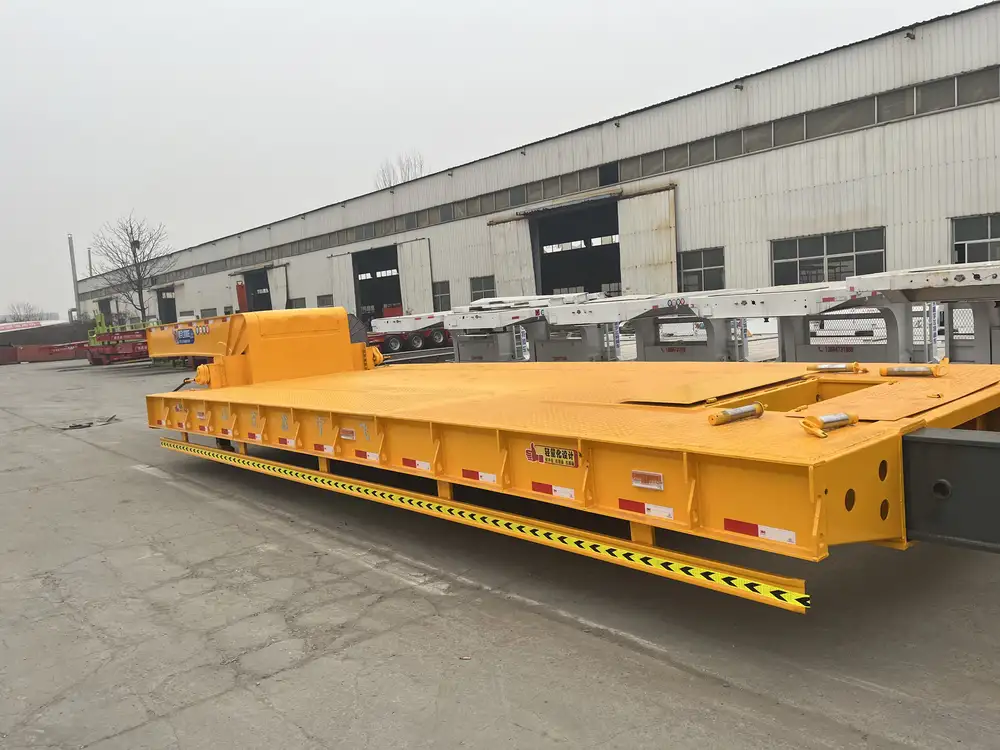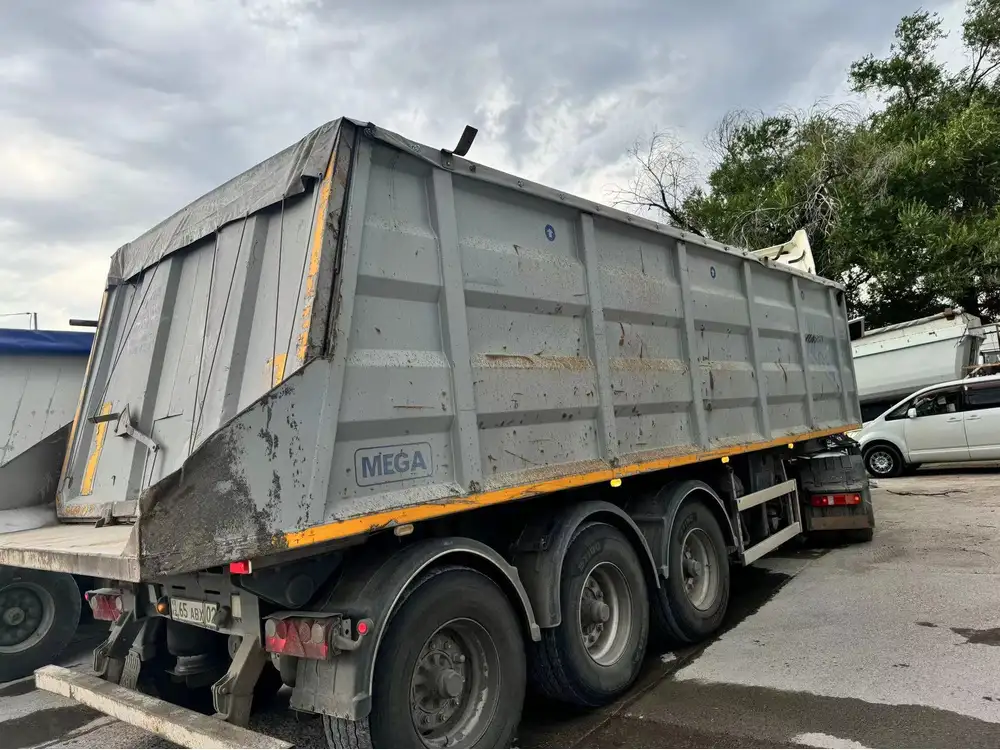Introduction to Fifth Wheels and Semi Trailers
Navigating the intricate world of trailers can often feel like embarking on a complex journey filled with various vehicle types, configurations, and applications. Within this landscape, the fifth wheel and semi-trailer stand out as significant components of the transportation industry. Understanding the distinctions and functionalities of these trailers is crucial for both manufacturers and users alike.
What Is a Fifth Wheel Trailer?
A fifth wheel trailer is a specialized type of towed vehicle that connects to a truck through a unique hitch mounted in the truck bed. This design allows for better towing stability and weight distribution compared to traditional bumper-pull trailers. Fifth wheels are predominantly used for recreational purposes but can also serve various commercial applications.

Key Features of Fifth Wheel Trailers:
Hitching Mechanism: Utilizes a kingpin that locks into a hitch in the truck bed, ensuring strong attachment to the towing vehicle.
Space Efficiency: Offers ample living space, often including features like slide-outs that expand the living area.
Stability: Provides improved balance and handling over traditional trailers due to their design.
Table 1: Fifth Wheel Trailer Characteristics
| Feature | Description |
|---|---|
| Hitch Location | Inside truck bed |
| Weight Distribution | Better distribution due to enhanced coupling |
| Towing Capacities | Typically requires a heavy-duty pickup truck |
| Common Uses | Recreational, residential, and commercial applications |
What Is a Semi Trailer?
A semi-trailer, also known as a tractor-trailer, is a type of trailer that relies on a truck’s power unit for transportation. Semis are designed to be attached to a tractor unit via a fifth wheel connection, which is essential for distributing weight and ensuring road safety. Semi-trailers are widely utilized in the freight and logistics industry, playing a pivotal role in transporting goods and materials across vast distances.

Key Features of Semi Trailers:
Diverse Configurations: Available in numerous designs, including flatbeds, refrigerated trailers, and tankers, accommodating various cargo types.
Load Capacity: Semi-trailers are built to handle significant loads, often exceeding 80,000 pounds, making them the backbone of commercial freight transport.
Regulatory Compliance: Must adhere to stringent Department of Transportation regulations concerning weight limits and safety standards.
Table 2: Semi Trailer Characteristics
| Feature | Description |
|---|---|
| Hitch Location | Connected to a tractor through a fifth wheel hitch |
| Load Capabilities | Up to 80,000 pounds (gross vehicle weight) |
| Types of Trailers | Various types, including flatbeds, dry vans, and more |
| Common Uses | Freight, logistics, bulk material transportation |
Comparative Analysis of Fifth Wheels and Semi Trailers
To provide clarity on the distinctions between fifth wheels and semi-trailers, here is a structured comparison based on key features.

1. Connection Mechanism
Fifth Wheel: Utilizes a hitch in the truck bed, facilitating a more stable towing experience with a greater focus on weight distribution.
Semi-Trailer: Attaches to a tractor unit utilizing a fifth wheel hitch, which is essential for handling truckloads that exceed the capacities of standard vehicles.
2. Intended Use
Fifth Wheel: Primarily designed for recreational and residential use, such as RV living or camping, allowing for versatile living arrangements on the go.
Semi-Trailer: Specifically engineered for commercial freight transport, focusing on logistics, shipping, and delivery needs.
3. Design and Structure
Fifth Wheel: Generally lighter and built for maneuverability, with designs that often include living quarters or amenities.
Semi-Trailer: Heavier construction, built for durability and capacity, featuring reinforced structures to support loads and maintain road safety.

4. Weight Limits and Regulations
Fifth Wheel: Weights can vary, but they typically range between 6,000 and 10,000 pounds, depending on size and configuration.
Semi-Trailer: Adheres to federal regulations that permit a combined weight of up to 80,000 pounds for trucks and trailers.
Table 3: Feature Comparison
| Comparison Criteria | Fifth Wheels | Semi Trailers |
|---|---|---|
| Hitch Type | Truck-bed mounted fifth wheel | Tractor fifth wheel hitch |
| Primary Function | Recreational use and living arrangements | Freight and commercial transportation |
| Weight Class | Lightweight, up to 10,000 pounds | Heavy-duty, up to 80,000 pounds |
| Regulatory Compliance | Local regulations may apply | Federal and state regulations govern operations |
Common Questions About Fifth Wheels and Semi Trailers
As users delve into the world of fifth wheels and semi-trailers, several questions frequently arise. Addressing these inquiries can further illuminate the differences and applications of these trailers.

1. Can a Fifth Wheel Be Used for Commercial Purposes?
While fifth wheels are primarily designed for recreational use, some manufacturers produce models suitable for light payload transportation. However, it is crucial to note that they do not match the load capacity and durability required for extensive commercial operations. Therefore, businesses should consider semi-trailers for heavier, regulated freight needs.
2. What Are the Costs Associated with a Fifth Wheel vs. a Semi Trailer?
Cost can vary widely based on brand, design, and features. Here’s a brief overview:
Fifth Wheel Trailers: The price can range from $10,000 to over $100,000, depending on the luxury level and features.
Semi Trailers: These can range from $30,000 to $150,000 or more, depending on the configuration and design, particularly for specialized functions like refrigerated or flatbed models.
3. Do You Need a Special License for Towing a Fifth Wheel?
While most states do not require a special license for towing a fifth wheel, it’s essential to check local regulations. In contrast, truck drivers operating semi-trailers do require a commercial driver’s license (CDL) due to the heavier weights and stricter regulations governing freight transport.

Real-World Applications of Fifth Wheels and Semi Trailers
Understanding the practical applications of fifth wheels and semi-trailers can provide further context to their importance in both recreational and commercial settings.
Applications of Fifth Wheel Trailers:
Recreational Camping: With built-in amenities and comfortable living spaces, many families choose fifth wheels for their road trips and camping excursions.
Mobile Living: Some individuals opt for full-time living in fifth wheels, especially retirees who travel across the country.
Applications of Semi Trailers:
Freight Transport: Vital for logistics companies moving goods across states and countries.
Construction: Semi-trailers transport heavy equipment and materials necessary for construction projects.

Table 4: Applications Overview
| Trailer Type | Typical Applications |
|---|---|
| Fifth Wheel | Recreational camping, mobile living |
| Semi Trailer | Freight transport, construction, bulk material moves |
Conclusion: Making the Right Choice
With a comprehensive understanding of the differences between fifth wheels and semi-trailers, making an informed decision can significantly impact your transportation needs, whether for personal recreation or commercial logistics. The sophistication of trailers and their various applications reflects their importance in modern transportation and logistics.
Whether you are a manufacturer looking to specialize in either type or a consumer contemplating an investment, it is imperative to assess your specific requirements against the inherent characteristics of these two distinct types of trailers. Ultimately, the right choice hinges on understanding their applications, cost implications, and operational regulations.



